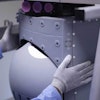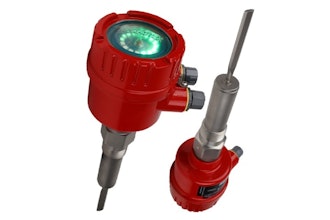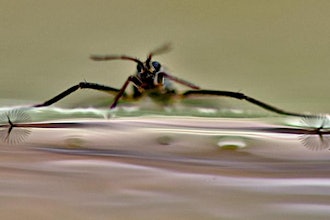Fumigation is a method of treatment for pest control purposes that relies on a gas to control, or eliminate, pests in a space.
For Similar Content: Subscribe to Daily Newsletters
Performing fumigation work requires highly trained, licensed professionals that have an aptitude for assessing situational need and safety, and that can model fumigation strategies to meet client needs. It is vital that the need for fumigation be essential/required, that proper gas selection is chosen and that a comprehensive site assessment has been conducted to ensure a safe and effective fumigation.
The pest management industry has always played a critical role in helping to protect the food supply chain of custody. A farm-to-fork approach has been the current mantra, a more involved, inclusive system of working with food based companies and growers, to help ensure the food supply chain maintains a high level of product integrity. The introduction of the Food Safety Modernization Act (FSMA), aims to ensure the U.S. food supply is safe by shifting the focus from responding to contamination to preventing it. In order to prevent widespread food illness created by improper processing or sanitation practices, FMSA has required the pest management industry to better leverage its knowledge, program selections, educational pieces — including client trainings — and treatment strategies to keep human, animal and pet food products safe for consumption.
Fumigation remains an important element of FSMA, and will successfully mitigate pest pressures when performed properly. Fumigants are often applied to soil to control soil-infesting pests that can damage plant growth or crop yields — an example of just how early and important the use of fumigants can begin to protect the food supply chain. Critically important is the fumigation of primary grains, whether conducted post-harvest, as a result of over-wintering or a function of regulatory export on shipments bound for overseas. In many cases, we have seen commodity values in bulk decline because the step of fumigation intervention was overlooked, or performed after infestation and damage had occurred.
As we move closer to the fork, we see product ingredients undergoing fumigation before the end product is finished, noting that some ingredient composition is more attractive to insect attack than others, but also protecting the finished product in cases where the evidence found warrants the use of gas, all in an effort to protect product integrity.
Why Fumigation Is A Good Pest Control Method
Fumigation work in some cases will be the most linear, effective way of treating a pest problem of great acuity. The benefits of gas are many, but the results are unprecedented when proper fumigation principles are employed. One of the key characteristics of a fumigant is the ability to penetrate the infestation, or area of concern, if the area is remote or concealed, or in an area that conventional practices cannot touch, such as a vessel storing ingredients where strong penetration is required. Using a fumigant will generally create contact with the target pest when proper planning has occurred and adequate exposure periods are allowed. As previously mentioned, the training and skill set of the fumigation lead will be critical in how areas are dosed and properly prepared. Considerations such as the use and placement of fans to equally distribute the gas and even consulting with the customer on product stock and inventory can make the facility more conducive to fumigation and will only enhance the end result.
When Is A Fumigation Necessary?
In some cases, fumigation will be the first and only control method, and in other cases it will be the last resort. When food safety, quality or no other equivalent timely measure can produce similar results, defaulting to fumigation is prudent.
Fumigation will be determined necessary for a variety of reasons which may include:
• Safeguarding the health of consumers that consume your products
• The potential for economic losses resulting from client returns or lost business
• Failed audits derived from pest pressures that may put existing relationships in peril
• Product integrity issues that may make goods and commodities not conducive for sale
• Regulatory pressure or consumer complaints
• Allergens, filth or adulterated product that can lead to recalls or plant closings until remedy has occurred
• A company’s culture which supports the position of food safety stewardship — a belief that consumers deserve safe, high quality products
Types Of Fumigations
The types of fumigations which can be conducted vary dramatically. In some cases, the professional fumigator will have to become both creative and strategic to influence outcomes while finding ways to accomplish work with economic advantages to the client.
This work can run the gamut. A facility fumigation, which the industry terms a structural or general fumigation, is where an entire building undergoes treatment. In a grain setting or storage setting it may be isolated to some storage or grain bins, flat storage or even a bunker, especially in years where crop yield surpasses storage capacity. In many situations, only equipment and machinery will be placed under gas, called a “spot fumigation,” which can be done on regular intervals with the intention of controlling adult and larval stages, but without the cost and preparation of a general fumigation effort.
Other fumigations can occur to transport vehicles like railcars — which can remain under gas while in transit and are popular with grains and flour — trailers or containers, both for domestic purposes or export. Routinely, fumigation is conducted to containers for export purposes because of the wood packing material they contain, which is called ISPM 15 (International Standards for Phytosanitary Measures No. 15). This standard was intended to prevent the international transport of insects or spread of disease which could adversely impact ecosystems.
Fumigation work is broad based and can be performed when absolutely necessary or driven by regulation and/or requirement. For example, in 2015, we saw a fumigation requirement under certain conditions on export items to both New Zealand and Australia for the Brown Marmorated Stink Bug, (BMSB).
The Fumigation Process And Methods
Preparation
Before any fumigation can be performed a thorough assessment must be conducted. This assessment is generally performed with key stakeholders to fully understand the scope of the problem, the viability and need for fumigation work, and to help create a fumigation management plan (FMP) should the work be performed. It is during the assessment stage that the plan for fumigation first begins. A survey of the target area or grounds occurs, inspection of areas considered problematic are viewed (tunnels, basement areas, drains and connections to other structures including transfer or air-filled lines), facility or site drawings are reviewed, and a host of other things supported by the federal product label as part of use directions are studied as part of the planning process
Once a fumigation has been approved, it is the information learned during the site assessment that leverages the subject of “preparation.” All essential personnel from the company requesting the work, and those from the fumigation and/or pest control company, will meet and discuss the preparation needed and review the fumigation management plan — a required document outlining every step of the fumigation to ensure it is both safe and effective.
Physical “preparation” of the fumigation area is a project of laboring to make the site fumigation worthy. By definition, a site is worthy to be fumigated if it can hold gas for a specific period of time (exposure period) while maintaining a concentration of gas considered lethal to the target pest. In cases where gas egresses or diminishes faster than expected, or a soft half-loss time, then the use of add-gas will be utilized to buffer concentrations back up to optimal levels.
Work that is often done to hold gas in an area of fumigation might include sealing vents, passive or powered dust collection systems, or exterior filters originating from the inside — essentially, any area that the gas, and not air, can escape the intended space. It should be noted that no two fumigations are identical and that all management plans and associated sealing efforts will be unique to the job at hand.
Monitoring
Monitoring gas concentrations of any job after release is one of the most critical aspects of any fumigation. The entire job hinges on the ability to hold gas and ensuring mortality will occur, often by taking measurements confirming that lethal doses remain present for the duration of the job. Readings or measurements are taken and recorded and analyzed to make determinations of the aggregate concentrations, or snapshots of concentration depending on the nature of the work, helping to confirm if the fumigation will be successful, or whether additional gas must be used. Some gases utilize a concentration and time criteria, or CT, which must be met at the end of the fumigation as a target value — this value represents how much gas was accrued during the job and is a pest-specific or a situational-specific measurement based on several site variables.
Clearing and Aeration
Clearing a space of gas is done through a process of aeration. This process can be performed many different ways and is subject to the type of fumigation, the site and the equipment available for the fumigation, or as part of the structure. When fumigating buildings, you will often force-ventilate the structure using powered equipment to vacate gas or use on-site equipment to create “make-up” air. The introduction of air into a building helps to displace the fumigated air in the space, creating additional air movement. Bins and grain tanks are often equipped with fans and passive vents. Powered ventilators that expedite clearing of gas, and trailers/containers often have fans placed internally pre-fumigation that are powered up inside the vehicle to create air movement upon opening the rear doors, allowing for quicker evacuation of the gas.
Eventually, all fumigated spaces must be checked and cleared of gas to the established TLV indicated in the product labeling. It is imperative that no areas go unchecked. Fumigants by nature can gather in pockets or be trapped, and they can often build back up due to off-gassing once they enter commodities and then slowly diffuse back out.
Fumigators will use a variety of equipment which requires constant calibration to ensure accuracy of gas measurements. Devices used for determining safe re-entry or establishing if the TLV has been met are called clearing devices. These devices are generally specific to a unilateral gas and can pick up concentrations in the Parts Per Million range. It is strongly suggested that back-up detection and clearing instruments are on hand to support the final reading as validating final readings are a must.
Conclusion
Fumigation treatments continue to be an important component of FSMA. This method will safely and effectively mitigate pest pressures and keep human, animal and pet food products safe for consumption. Fumigation work requires highly trained, licensed professionals that have an aptitude for assessing client needs and safety. A key attribute of a fumigant is the ability to penetrate the pest infestation in a remote or concealed area. With the proper gas selection and a comprehensive assessment, a safe and effective fumigation can be performed resulting in minimal risk of client return or lost business.























